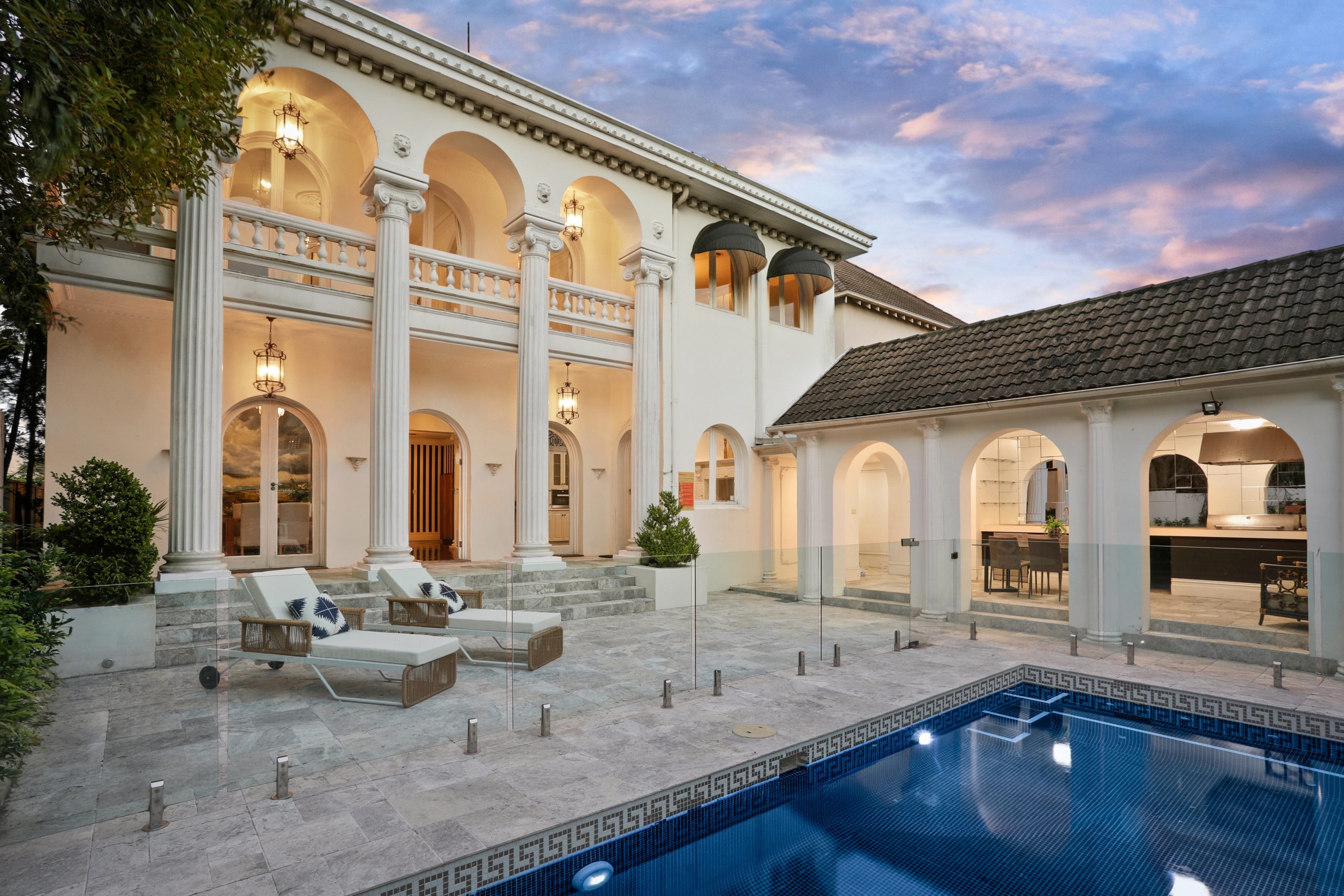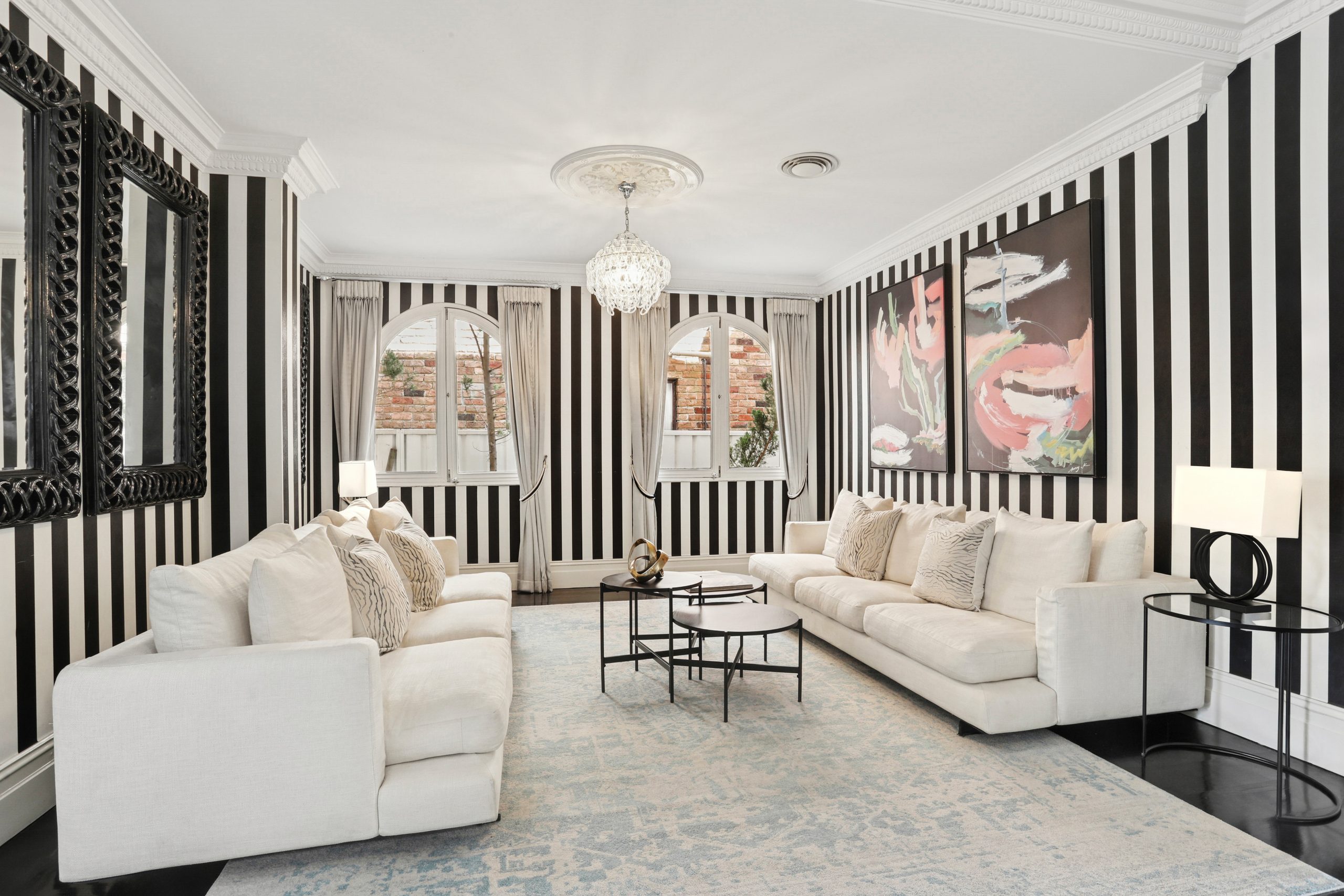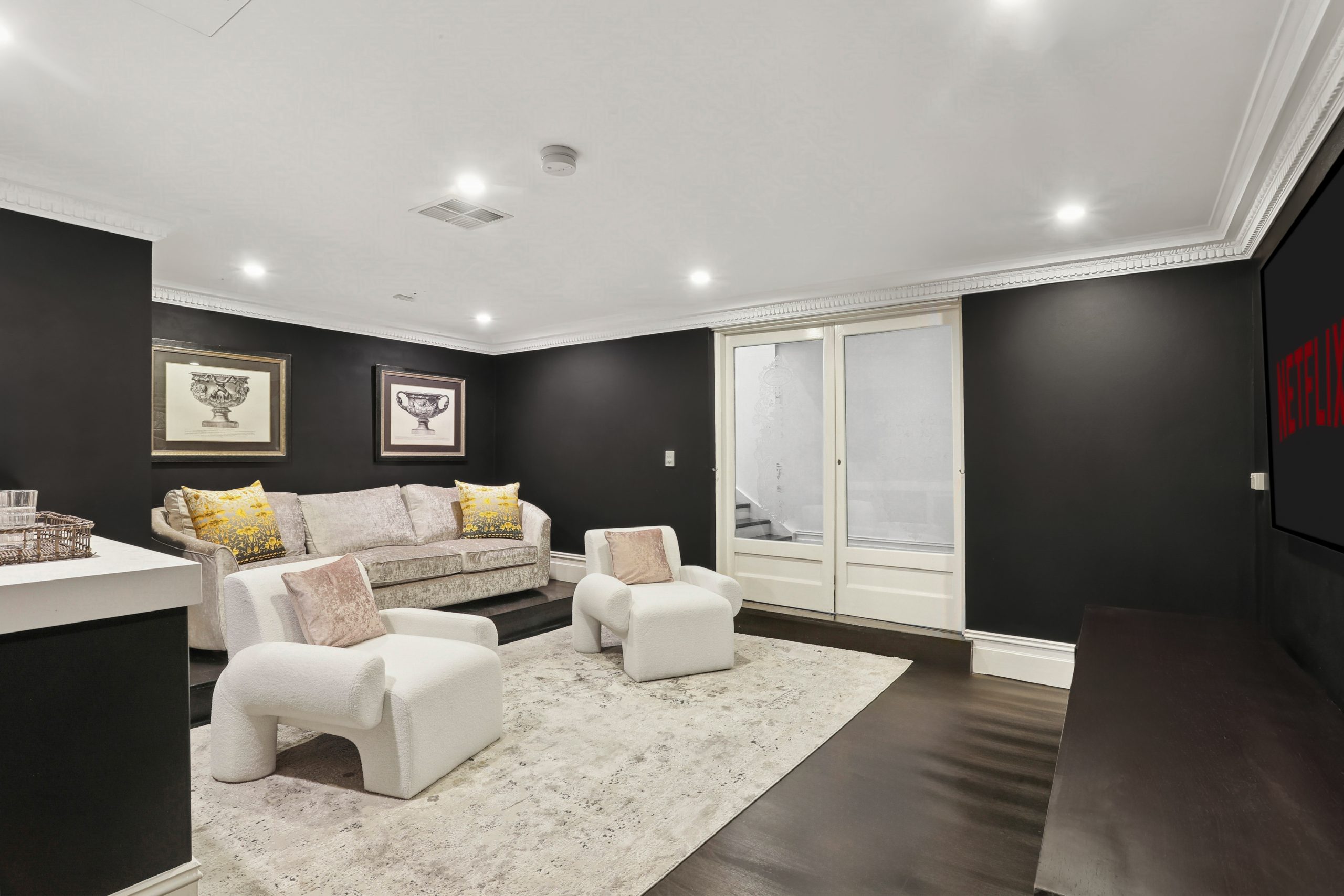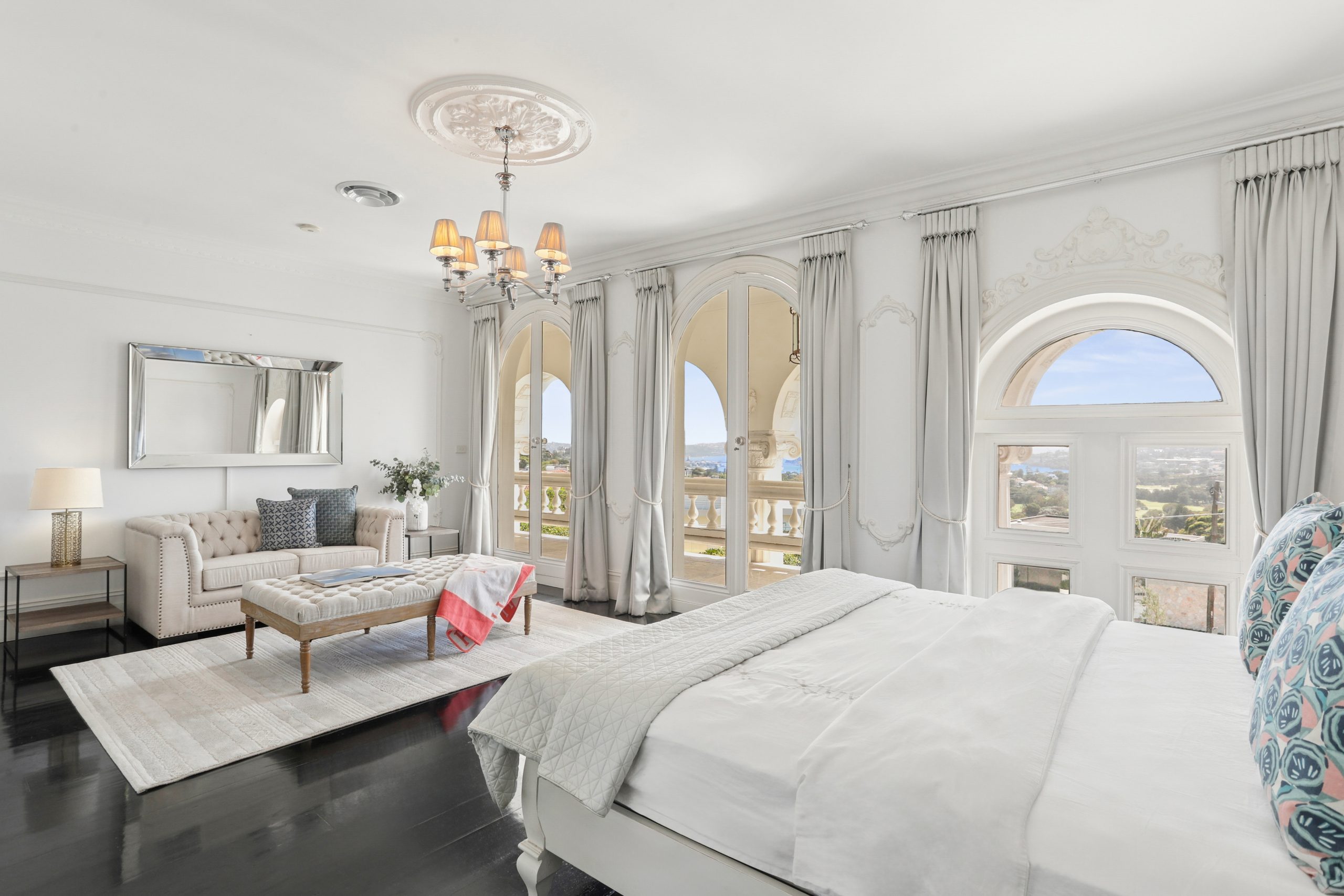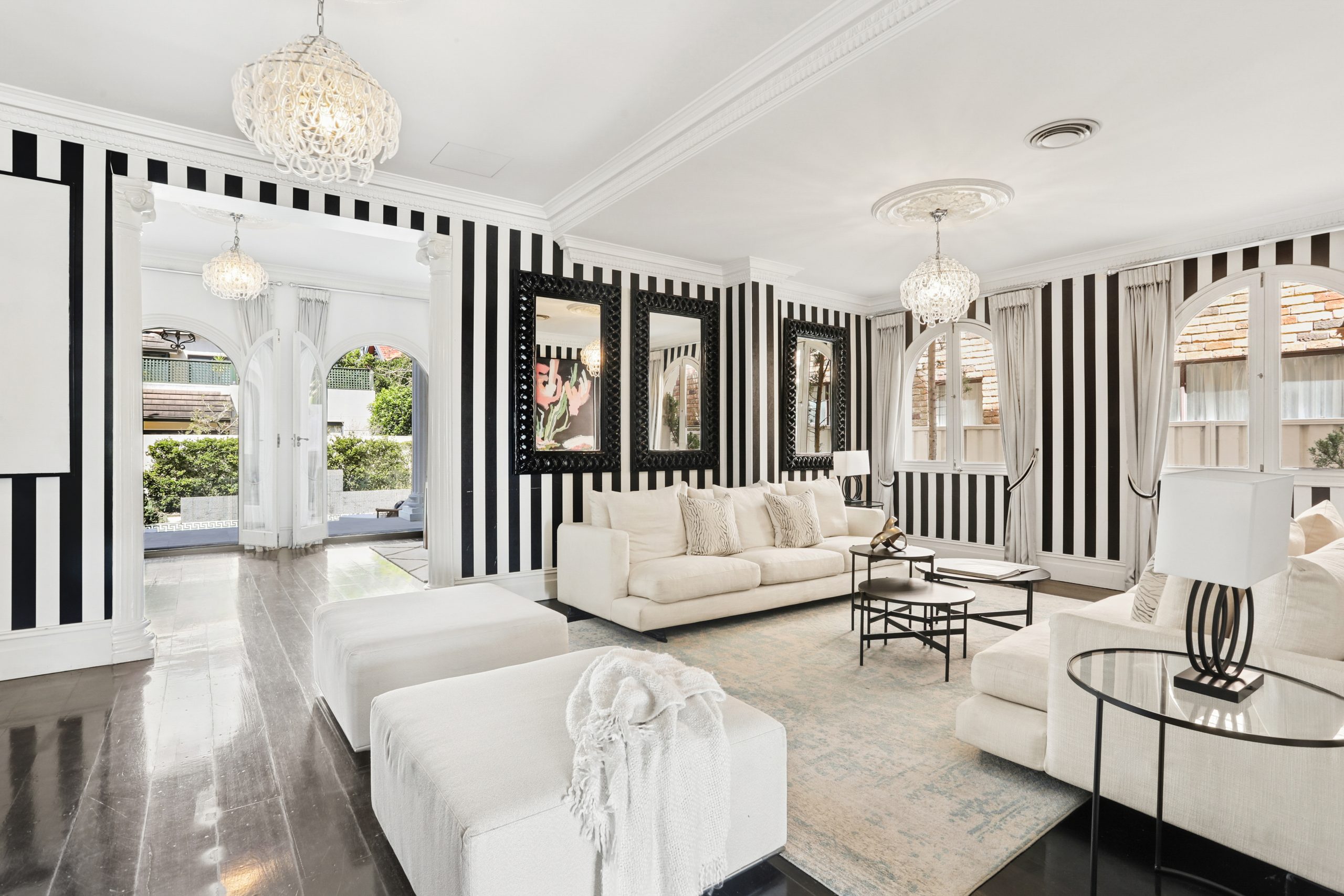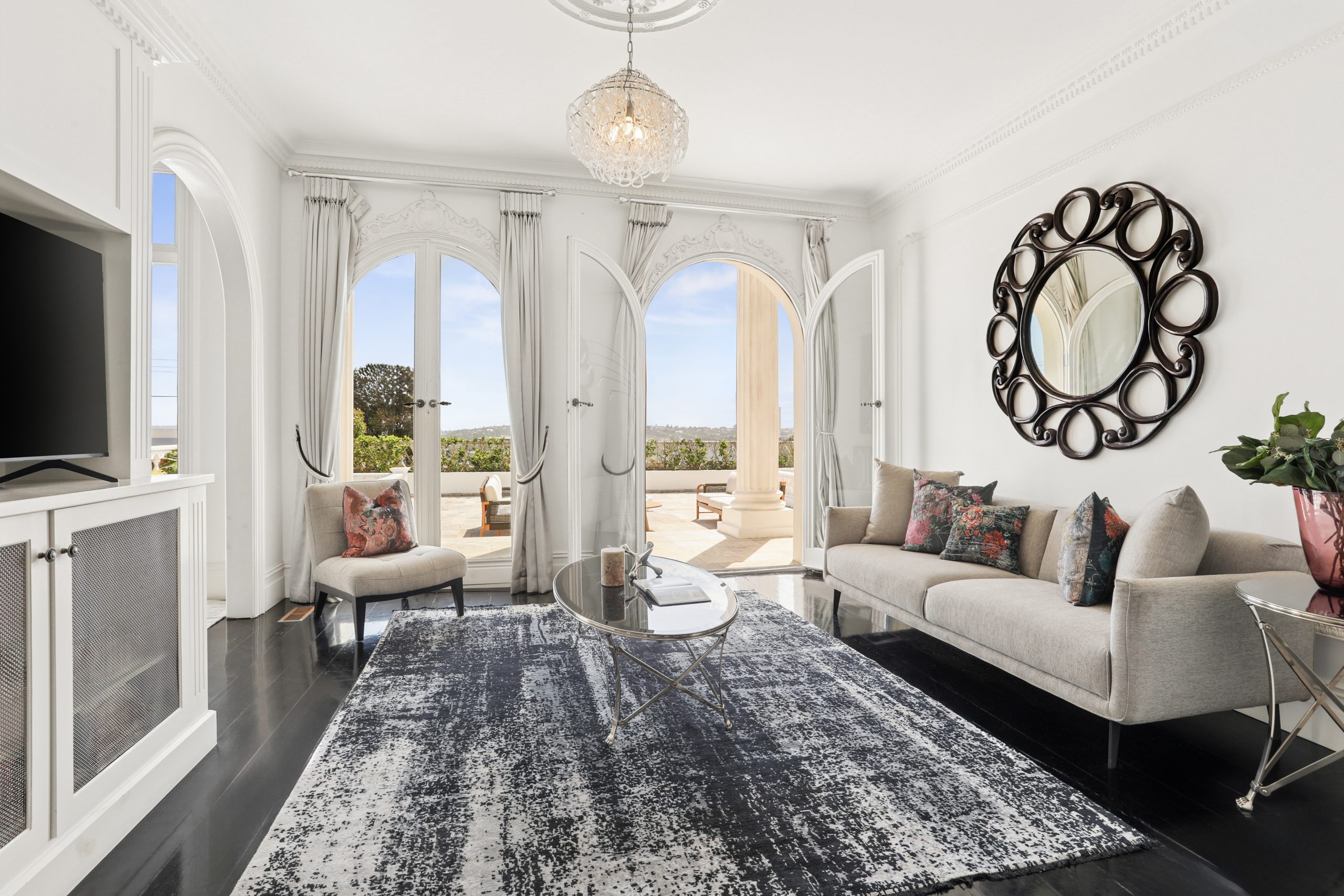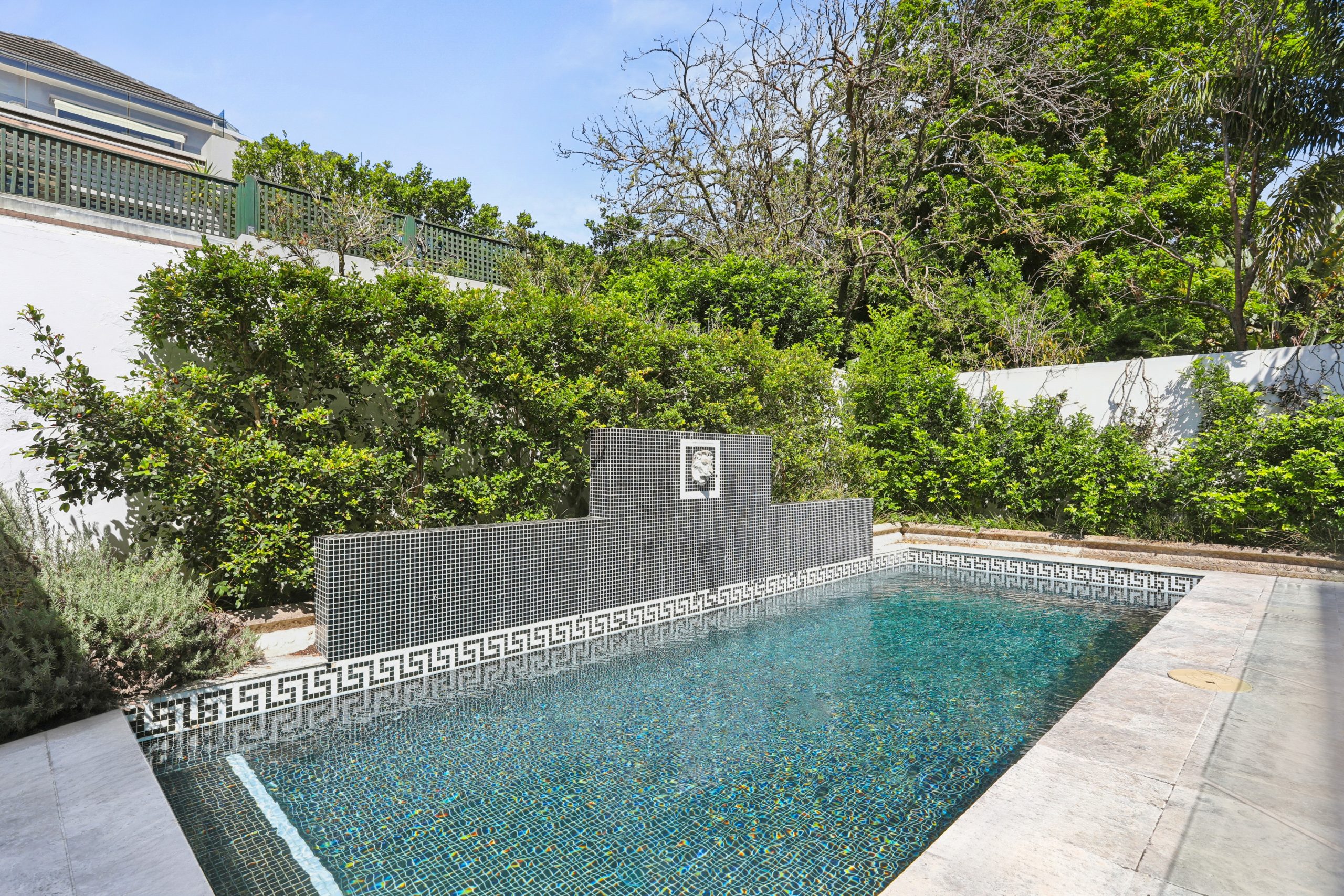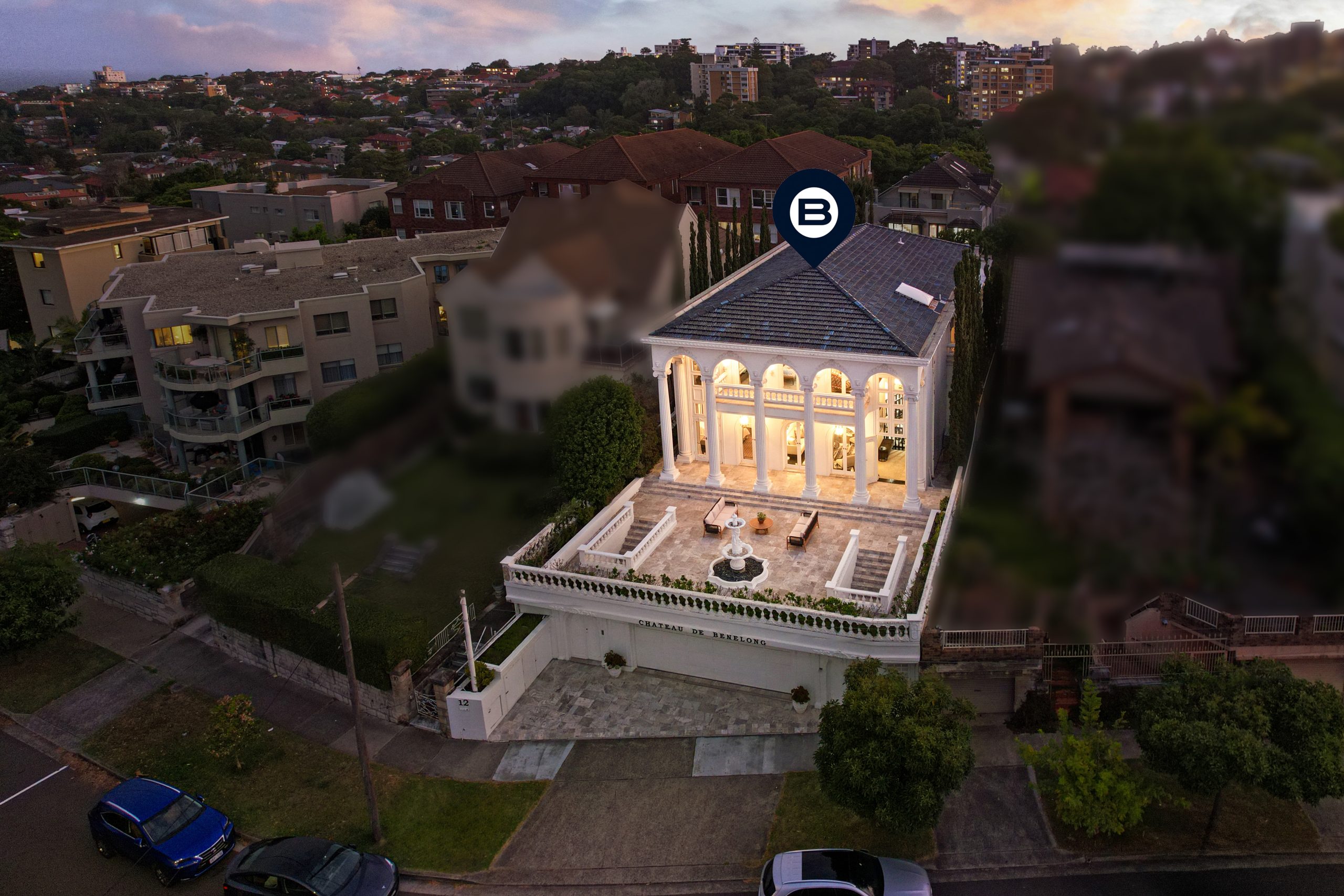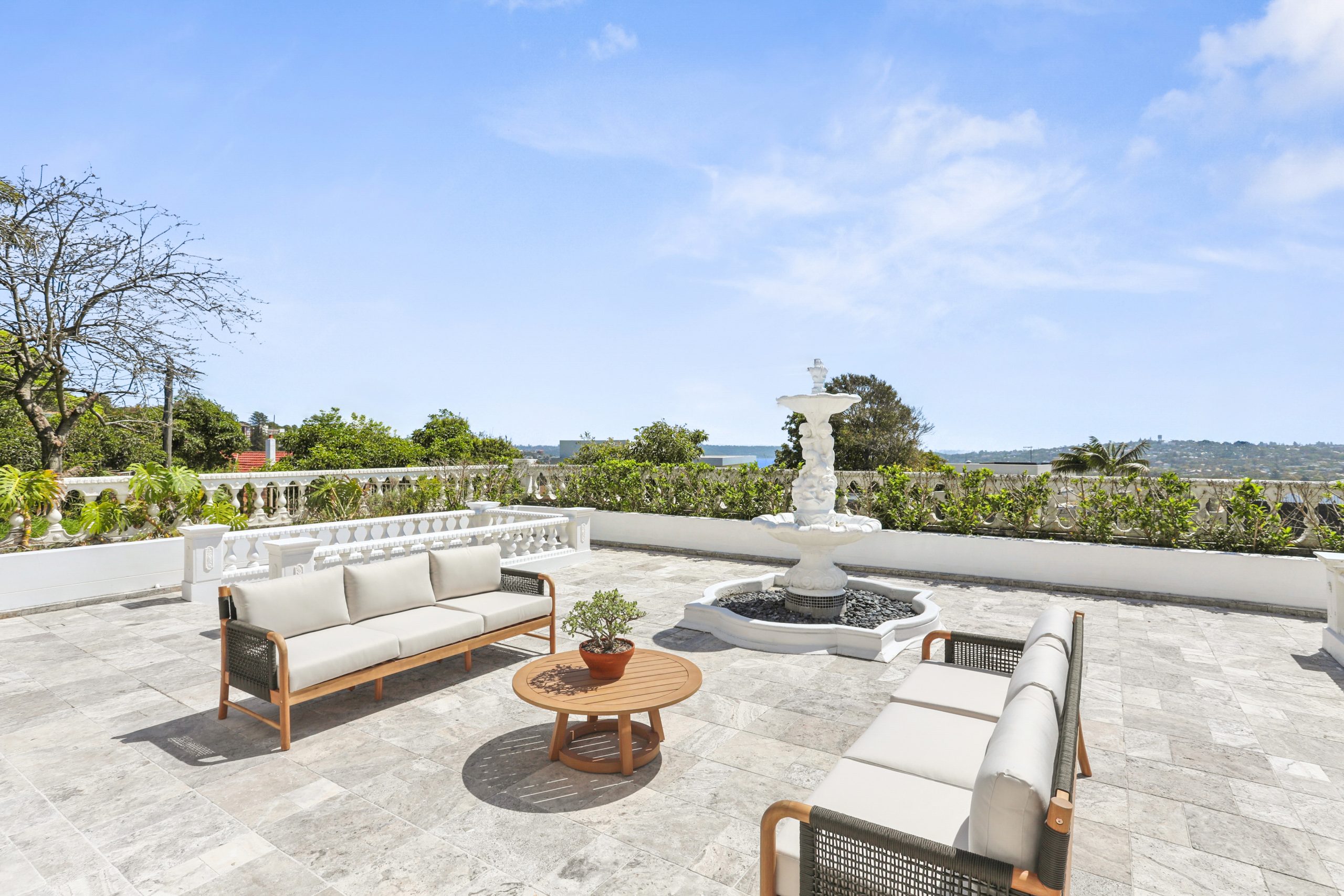Sydney’s Hidden Chateau: Bellevue Hill’s Regal Landmark on the Market
Beyond its romantically Roman facade, this Sydney ‘palace’ is about as unique as they come.
Sydney isn’t known for its castles, but Chateau de Benelong is a local landmark with a difference. The regal seven-bedroom 1970s residence with its Roman archways and Greek columns stands tall among its neighbouring contemporary homes on Benelong Cres in Bellevue Hill.
The eastern suburbs palace was created by award-winning designer Lesley Santy in the neo-classical style. Santy wasn’t known for architecture, but did win a gold medal in the 1957 international furniture exhibition in Milan.
Benelong Crescent’s landmark property stood largely untouched for decades before getting an extensive custom renovation in 2011 by former owners Nare Elio and Makedonka Del-Ben of the Big Dig Build Group. The pair had paid $3.67 million for it in 2009 and set about adding a pool, a pavilion, a home theatre and wine cellar.
It was back on the market by 2012 with a $7.5 million price guide, but ended up selling for $4.995 million. The chateau last exchanged hands in 2015 for $5.9 million.
Fast forward a decade, and Bellevue Hill is now home to Australia’s most expensive property according to Domain’s December House Price Report showing a median sale price of $8.51 million.
Today, the home described as “one of Sydney’s most iconic residences” has resurfaced with price expectations of $13 million to $15 million via Paul Biller and Ben Torban of Biller Property – the agency behind the sale a decade ago.
The impressive three-storey home is a blend of European style and theatrical Hollywood grandeur.
Thanks to its elevated position, Chateau de Benelong has sweeping views over the harbour from a variety of vantage points.
Across the ground floor there are several living spaces for casual and more formal entertaining, as well as wide north and south-facing terraces to follow the sun all year long. Throughout the grand home there are stylish interiors including grand hallways, high ceilings and a series of iconic arched windows which open out to private terraces.
This ground floor layout is home to two kitchens with a separate wing suitable for guest or staff accommodation. The primary kitchen has been reimagined in a French Provincial style with an adjoining outdoor kitchen and Travertine terrace for alfresco gatherings. Beyond the barbecue area, the yard has a heated mosaic-tiled pool and landscaped gardens.
There is even more space for entertaining in style with a poolside cabana, a lower level rumpus room or home theatre plus a gym or yoga room.
Up on the accommodation level a main bedroom suite has a dressing room, a large ensuite and balcony, while four more bedrooms on the same level have Travertine ensuites or balcony access.
Additional features include internal access to a four-car garage, a wine cellar, ducted air-conditioning and DA approval for a rooftop terrace capitalising on harbour views.
Chateau de Benelong is positioned close to sought after schools, popular harbour beaches, Bondi Beach, Double Bay shopping, and the Rose Bay ferry wharf.
Bellevue Hill’s Chateau de Benelong is listed with Paul Biller of Biller Property with a $13 million to $15 million price guide.
Records keep falling in 2025 as harbourfront, beachfront and blue-chip estates crowd the top of the market.
A divide has opened in the tech job market between those with artificial-intelligence skills and everyone else.
The 2026 McGrath Report warns that without urgent reforms to planning, infrastructure and construction, housing affordability will continue to slip beyond reach for most Australians.
Australia’s housing market has reached a critical juncture, with home ownership and rental affordability deteriorating to their worst levels in decades, according to the McGrath Report 2026.
The annual analysis from real estate entrepreneur John McGrath paints a sobering picture of a nation where even the “lucky country” has run out of luck — or at least, out of homes.
New borrowers are now spending half their household income servicing loans, while renters are devoting one-third of their earnings to rent.
The time needed to save a 20 per cent deposit has stretched beyond ten years, and the home price-to-income ratio has climbed to eight times. “These aren’t just statistics,” McGrath writes. “They represent real people and real pain.”
McGrath argues that the root cause of Australia’s housing crisis is not a shortage of land, but a shortage of accessibility and deliverable stock.
“Over half our population has squeezed into just three cities, creating price pressure and rising density in Sydney, Melbourne and Brisbane while vast developable land sits disconnected from essential infrastructure,” he says.
The report identifies three faltering pillars — supply, affordability and construction viability — as the drivers of instability in the current market.
Developers across the country, McGrath notes, are “unable to make the numbers work” due to labour shortages and soaring construction costs.
In many trades, shortages have doubled or tripled, and build costs have surged by more than 30 per cent, stalling thousands of projects.
Need for systemic reform
McGrath’s prescription is clear: the only real solution lies in increasing supply through systemic reform. “We need to streamline development processes, reduce approval timeframes and provide better infrastructure to free up the options and provide more choice for everyone on where they live,” he says.
The 2026 edition of the report also points to promising trends in policy and innovation. Across several states, governments are prioritising higher-density development near transport hubs and repurposing government-owned land with existing infrastructure.
Build-to-rent models are expanding, and planning reforms are gaining traction. McGrath notes that while these steps are encouraging, they must be accelerated and supported by new construction methods if Australia is to meet demand.
One of the report’s key opportunities lies in prefabrication and modular design. “Prefabricated homes can be completed in 10–12 weeks compared to 18 months for a traditional house, saving time and money for everyone involved,” McGrath says.
The report suggests that modular and 3D-printed housing could play a significant role in addressing shortages while setting a new global benchmark for speed, cost and quality in residential construction.
Intelligent homes
In a section titled Weathering the Future: The Power of Smart Design, the report emphasises that sustainable and intelligent home design is no longer aspirational but essential.
It highlights new technologies that reduce energy use, improve thermal efficiency, and make homes more resilient to climate risks.
“There’s no reason why Australia shouldn’t be a world leader in innovative design and construction — and many reasons why we should be,” McGrath writes.
Despite the challenges, the tone of the 2026 McGrath Report is one of cautious optimism. Demand is expected to stabilise at around 175,000 households per year from 2026, and construction cost growth is finally slowing. Governments are also showing a greater willingness to reform outdated planning frameworks.
McGrath concludes that the path forward requires bold decisions and collaboration between all levels of government and industry.
“Australia has the land, demand and capability,” he says. “What we need now is the will to implement supply-focused solutions that address root causes rather than symptoms.”
“Only then,” he adds, “can we turn the dream of home ownership back into something more than a dream.”
Micro-needling promises glow and firmness, but timing can make all the difference.
From Italy’s $93,000-a-night villas to a $20,000 Bowral château, a new global ranking showcases the priciest Airbnbs available in 2026.









